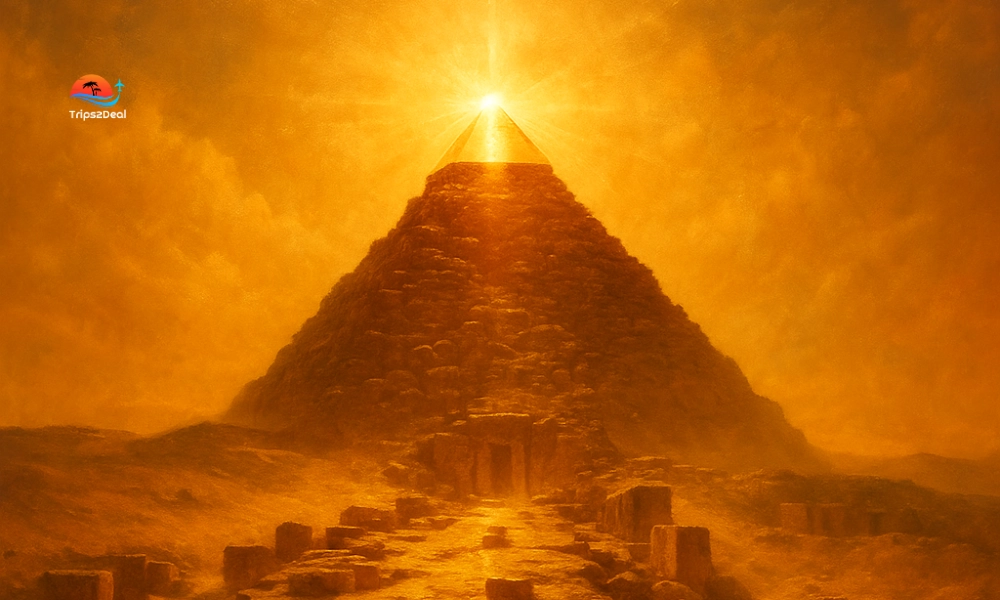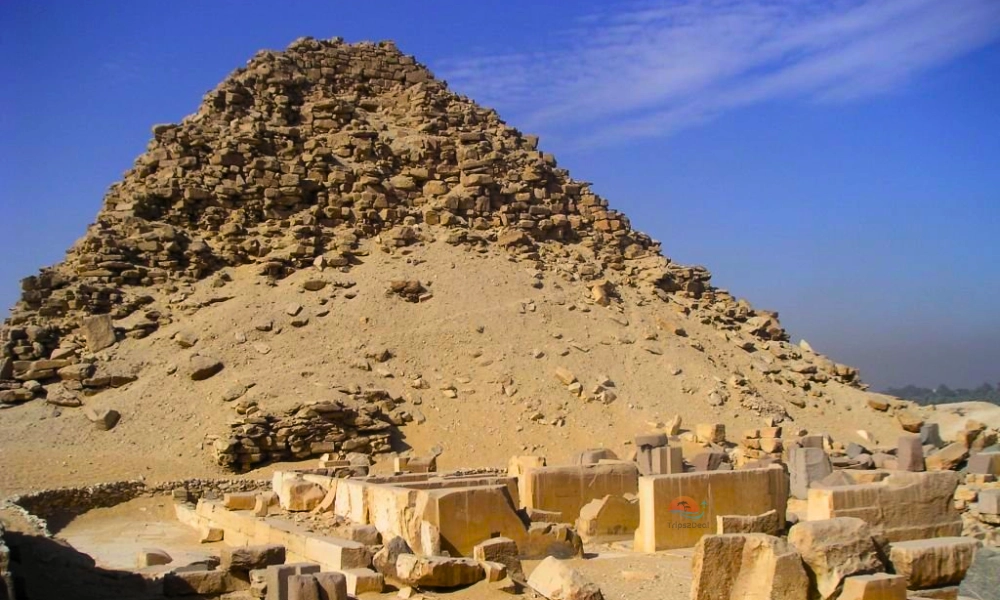Blogs

Sahure Pyramid
The pyramid or the pyramid of Sahure is one building that is located in Abusir just outside Cairo in the Fifth Dynasty, which was later constructed by the Egyptian pharaoh, Sahure who reigned between 2487 and 2475 BCE. It is not as impressive as the pyramids at Giza, but it is among the most important constructions of such a period that can provide strong responses regarding the architecture of the Old Kingdom and religion specifics of that era.
Table of Contents
Construction and History
Egypt's religion changed under Sahure. Ra is a solar cult gaining attention. This pyramid was one among the larger complex of tombs constructed so that the pharaoh could reach the afterlife safely. At first it was 48 meters (157 feet) high and its diameter at the base was about 78 meters (256 feet). It had been created of limestone and its exterior layer was of Tura limestone. It was an unfinished pyramid that began as a typical Fourth Dynasty pyramid with smooth sides.
The Mortuary Complex
Together with a valley temple, a causeway, a mortuary temple, the pyramid formed a part of the massive construction that was utilized in the burial process. A causeway was between the pyramid and the valley temple where the offerings and reminders transpired. The temple of the dead was graced by reliefs that were painted beautifully showing what Sahure had achieved in the military such as hunting and sailing. All these were to ensure his actions in life lived even in the afterlife.
Decoration and Reliefs
The mortuary temple contains some of the best reliefs of Old Kingdom art. They depict Sahure engaged in different royal deeds, including hunting in the swamps and taking armed campaigns to far destinations like Punt. These scenes serve as a chronicle of his reign, but at the same time underline the fact that he was in contact with God, which reflects his power over the world and the environment.
This period's art was far more realistic than earlier periods, with more stylized art forms and a focus on the king's activities as a symbol of his vitality and divine favor.
Solar Symbolism
The Sahure pyramid is solar-oriented as well. The pyramid and the sun were necessary to the pharaoh as his path to the afterlife where he was believed to be reintegrated with the Ra. The reflection point (pyramidion) of the pyramid would have been created of a reflective material, which shows the connection between Sahure and the sun god Ra.

Architectural Significance and Evolution
This part may discuss how the Pyramid of Sahure bears the influence of the changing history of pyramid architecture in the pharaonic sense, in that the pyramid may be compared with the earlier pyramids in the Fourth Dynasty.
It might also discuss a transformation in pyramid design during the Fifth Dynasty, specifically the shift to the stepped pyramid, which represented both an alteration in architectural practice and a change in religious symbolism.
Funerary Cult and Afterlife Beliefs
The Egyptian afterlife was core to the designing of the pyramid. It was believed that the ka, or the soul of the pharaoh, required things to feed him in death. The mortuary complex, and in particular, the reliefs and inscriptions in the temple were meant to address the spiritual needs of the king and guarantee his survival in the afterlife.
The king was not only a ruler in life but a lifetime ruler and he was considered to influence Egypt even after his demise. The pyramid ceremonies maintained the king's godly connection and ensured his rebirth.
Decline and Legacy
Similar to most other pyramids, the Pyramid of Sahure was subject to wear and theft after numerous years. The reason is that the stones in them were utilized in other buildings. The reliefs and text copied in the funerary temple of Sahure are also very crucial. They reveal the manner in which individuals lived religiously, politically and culturally in the Fifth Dynasty.
Although a few of the pyramids are coming apart already, the Sahure pyramid complex remains one of the best locations to get to know the construction of the pyramids, the way the kings should be buried, and the evolution of the religion in the Old Kingdom of Egypt.

Conclusion
Old Kingdom architecture and religion can be seen in the Pyramid of Sahure. Though it is smaller than the Giza pyramids, it presents so much when it comes to the construction, sun worship and royal burial of the Fifth Dynasty. These beautiful reliefs concern the rule of Sahure on the one hand, his achievements in the military affairs on the other and religious sensibility. The pyramid being old has eroded and been ruined, but it is also applicable to reflect on the development of religion and civilization of the Egyptians.




